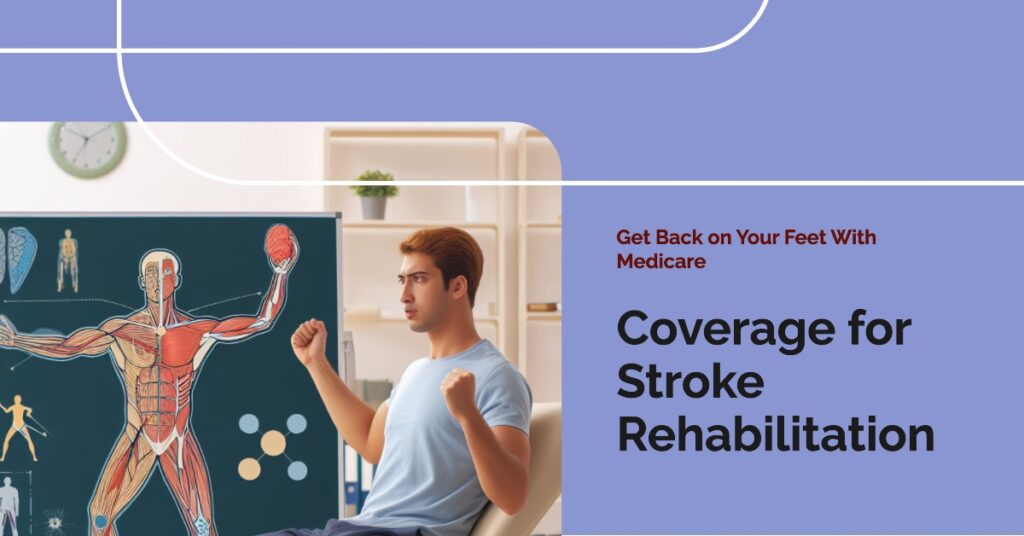When recovering from a stroke, the level of care required can often exceed what can be provided at home or in an outpatient setting. In these cases, the patient may need to be admitted to an Inpatient Rehabilitation Facility (IRF), where they have access to intensive, multidisciplinary rehabilitation services.
An IRF provides a higher level of care than other rehabilitation settings, offering around-the-clock medical supervision, as well as a more extensive and coordinated approach to rehabilitation therapies. A patient in an IRF would typically receive at least three hours of therapy per day, at least five days a week. These therapies could include physical therapy, occupational therapy, speech-language therapy, and other specialized therapies based on the individual’s specific needs.
For Medicare Part A to cover your stay in an IRF, your doctor must certify that you need the level of care an IRF provides. The decision is based on factors such as your overall health status, the severity of your stroke, the type and intensity of therapy you need, and your capacity to participate in an intensive therapy program.
However, Medicare coverage in an IRF has its limitations. For example, while Medicare Part A covers the costs of care in an IRF, including room, board, nursing services, meals, and rehabilitation therapies, there are cost-sharing requirements. For the first 60 days of your benefit period, you are required to pay a deductible. From days 61-90, a daily co-insurance amount applies, and beyond day 90, you begin using your “lifetime reserve days,” with a higher daily co-insurance. Once your lifetime reserve days are used up, you are responsible for all costs.
Medicare Part B coverage also has limitations, specifically regarding outpatient therapy services. Part B includes an annual cap on the amount it will pay for physical therapy and speech-language pathology combined and a separate cap for occupational therapy. In 2023, these caps are $2,110 and $2,110 respectively. However, if your healthcare provider believes that continued therapy beyond these caps is medically necessary, they can document this in your medical record, and exceptions can be made to exceed these limits.
It is essential to discuss your rehabilitation plan and Medicare coverage with your healthcare provider and insurance plan to understand the coverage limits, potential out-of-pocket costs, and any necessary documentation or steps needed to ensure your needed care is covered. Through informed discussions and diligent planning, you can maximize the benefits of your Medicare coverage to support your recovery journey.
What is Stroke Rehabilitation?
Stroke rehabilitation is a coordinated program of care that aims to help stroke survivors regain their independence and improve their quality of life. Depending on the severity and type of stroke, rehabilitation may involve physical therapy, occupational therapy, speech and language therapy, and other services. The goal is to help the stroke survivor relearn skills that were lost or impaired due to the stroke and adapt to any residual disabilities.
Medicare Part A Coverage for Inpatient Stroke Rehabilitation
Medicare Part A, often called “hospital insurance,” primarily covers inpatient care. If you’ve had a stroke and require intensive rehabilitation services, you may be admitted to an inpatient rehabilitation facility (IRF). Medicare Part A will cover the costs of this care, including room and board, nursing services, meals, and rehabilitation therapies. There is a deductible for each benefit period, and co-insurance may apply after a certain number of days.
Medicare Part B Coverage for Outpatient Stroke Rehabilitation
Medicare Part B, or “medical insurance,” covers outpatient care. If you’re recovering from a stroke but don’t require the intensity of inpatient rehabilitation, you may receive services at an outpatient facility or even at home. Part B covers physical therapy, occupational therapy, and speech-language pathology services, and the patient typically pays 20% of the Medicare-approved amount for these services after meeting the yearly deductible.
Medicare Advantage Plans and Stroke Rehabilitation Coverage
Medicare Advantage plans, also known as Part C, are offered by private insurance companies approved by Medicare. These plans must cover at least the same level of services as Original Medicare (Parts A and B), but many offer additional benefits. Depending on your plan, you may have more extensive coverage for stroke rehabilitation services, including alternative therapies or wellness programs.
Recovering from a stroke can be a challenging journey, but understanding your Medicare coverage can make the process more manageable. With a good grasp of the services covered under Parts A and B, and potentially expanded coverage under a Medicare Advantage Plan, you can ensure that you or your loved one receives the best possible care during the crucial period of rehabilitation. It’s essential to stay informed, ask questions, and seek out additional resources to support your journey to recovery.


